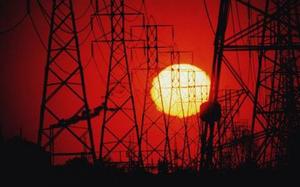BlackoutsPower cuts will be more common in the future
U.S. figures show that since 2007, commercial and domestic air-conditioning alone consumed 484billion kilowatt hours of electricity — not much more than the country’s total energy consumption in the mid-1950s. The American Society of Civil Engineers (ASCE) has warned that U.S. generation systems could collapse by 2020 without $100 billion of new investment in power stations. Demands of high-powered electrical appliances, a growing world population, and inadequate investment in the power sector will create more frequent power blackouts in Western societies.

Power cuts becoming more likely // Source: ahmedamiri.ae
Demands of high-powered electrical appliances, a growing world population, and inadequate investment in the power sector will create more frequent power blackouts according to academic research.
In their paper, Steve Matthewman, Associate Professor of Sociology at the University of Auckland, and Hugh Byrd, Professor of Architecture at the University of Lincoln, United Kingdom, reveal that today’s occasional “blackouts” are mere dress rehearsals for the future.
They argue that these blackouts will occur with greater frequency and increased severity and that the West needs to abandon the idea of uninterrupted electricity supply.
A University of Auckland release reports that according to the study, power cuts will become more regular around the globe as electrical supply becomes increasingly vulnerable and demand for technology continues to grow at an unprecedented rate.
China, Brazil, and Italy have already had significant power failures in the past decade.
New Zealand does not escape. The report outlines how Auckland’s CBD (Central Business District) was crippled with power cuts for five weeks in 1998. Generators became a common site in the city center as shops and business struggled to remain open.
Also, despite being blessed with about an 80 percent renewable energy supply, with climate change there is predicted to be less rain and less snow in temperate regions, both of which will have negative impacts on hydroelectricity that we depend on.
“Infrastructural investment across Europe and the USA has been poor, and our power generation systems are more fragile than most people think,” Professor Matthewman says.
“The vulnerability of our electricity systems is highlighted by one particular blackout which took place in Italy in 2003, when the whole nation was left without power because of two fallen trees. This reality is particularly alarming when you consider the world’s increasing dependency on electricity.”
They note that there have already been frequent warnings about future blackouts in Britain from as early as 2015 from government advisers. The picture is broadly similar across the world, with the American Society of Civil Engineers (ASCE) warning that U.S. generation systems could collapse by 2020 without $100 billion of new investment in power stations.
U.S. figures show that as long ago as of 2007, commercial and domestic air-conditioning alone consumed 484billion kilowatt hours of electricity — not much more than the country’s total energy consumption in the mid-1950s.
Guaranteed electrical power, however, is under threat because of resource constraint, with the depletion of fossil fuel reserves and the transient nature of renewable energy sources. The Western world also relies on ageing systems; for example, almost three quarters of American transmission lines are more than 25-years old.
— Read more in Steve Matthewman and Hugh Byrd, “Blackouts: a sociology of electrical power failure,” Social Space Scientific Journal (8 January 2014)
